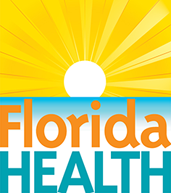It's a New Day in Public Health.
The Florida Department of Health works to protect, promote, and improve the health of all people in Florida through integrated state, county, and community efforts.
Florida Healthy Beaches
Environmental Public Health
- 386-274-0694
- VolusiaHealthFacilities@flhealth.gov
-
Mailing Address
DOH-Volusia Environmental Public Health
P.O. Box 9190
Daytona Beach, FL 32120
The Florida Department of Health collects samples for microbiological analysis on different coastal beach locations on a routine basis. High levels of bacteria can indicate an increased risk of gastrointestinal illness (GI illness) in swimmers. When high levels of Enterococci bacteria are found, public health advisories are posted and the media are notified to warn the bathing public of this increased risk of GI illness.
Water Quality Criteria
The Florida Healthy Beaches Program follows the Recreational Water Quality Criteria (RWQ criteria), recommendations and water quality grant requirements put forth by the United States Environmental Protection Agency (USEPA).
Enterococci Single Sample
- Good: 0-35 Enterococci CFU per 100 ml of marine water.
- Moderate: 36-70 Enterococci CFU per 100 ml of marine water.
- Poor (unsatisfactory): 71 or greater Enterococci CFU per 100 ml of marine water.
Health Implications
Enterococci is an enteric indicator bacteria that normally inhabit the intestinal tract of humans and animals. The presence of enteric bacteria is an indication of fecal pollution, which may come from stormwater runoff, pets and wildlife, and human sewage. If they are present in high concentrations in recreational waters and are ingested while swimming or enter the skin through a cut or sore, they may cause human disease, infections, or rashes.
Blue-Green Algae
Florida Department of Environmental Protection routinely monitors blue-green algae blooms and collects samples for analysis.
Algae are plant-like organisms that sustain marine life. They contribute to the food chain and to the oxygen that keeps water bodies healthy. But sometimes, when conditions are right, such as warm water and increased nutrients, certain algae can quickly grow and overpopulate.
These foam or scum-like masses are called blooms, and can be pushed to the shore by winds, waves, tides, and currents. Some blooms release toxins that make ecosystems, animals, and people sick. Scientists call these harmful algae blooms, known as HABs.
In Florida, HABs can be found along our saltwater, freshwater, and brackish waterbodies. HABs are temporary and usually happen in late summer or early fall. They can last three to five months, sometimes longer, and can affect small and large areas.
Blue-green algal blooms can be reported online or by calling 855-305-3903. Learn more about Florida's water environments at Protecting Florida Together.



Connect with DOH